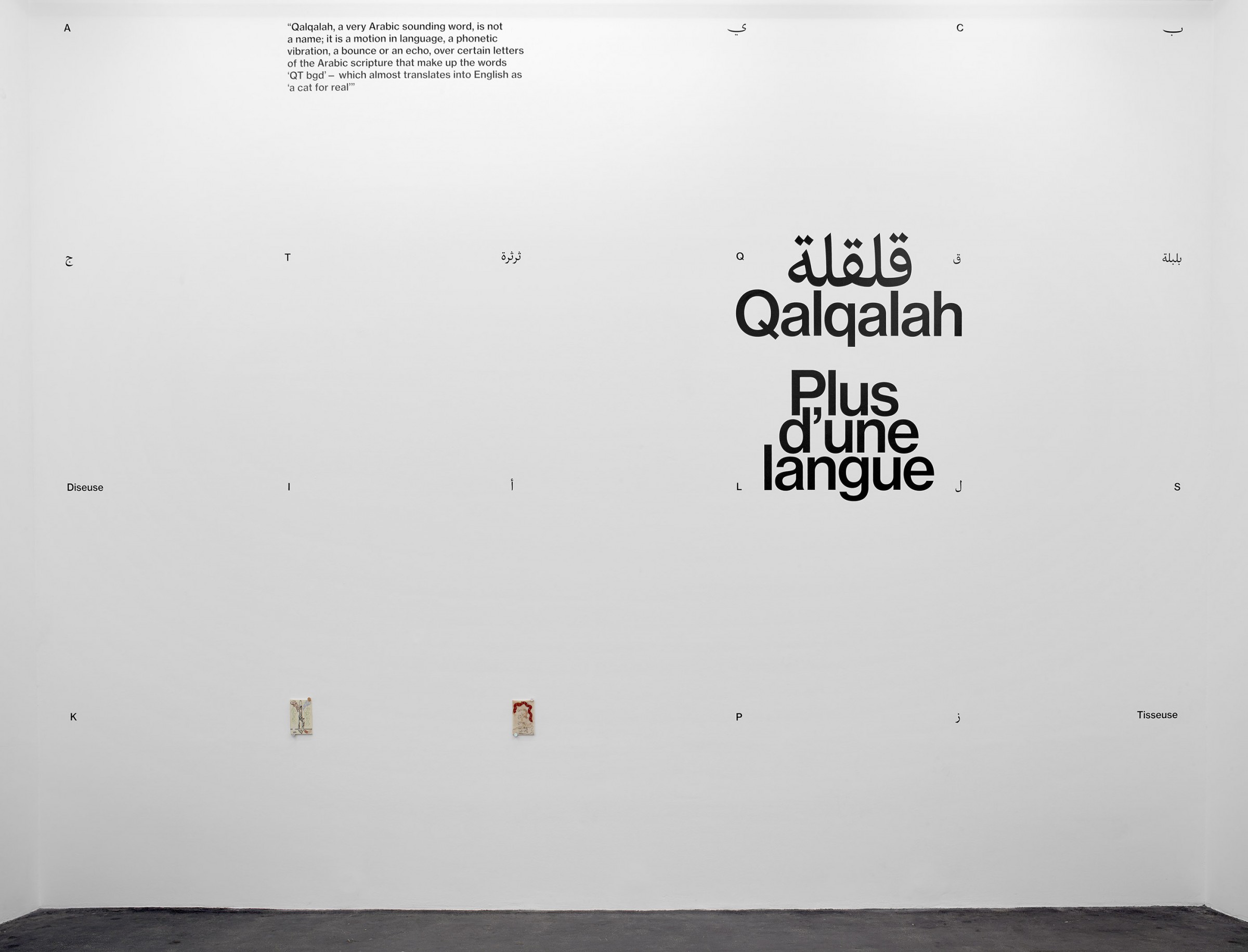
Lawrence Abu Hamdan
Sophia Al Maria
Mounira Al Solh
Noureddine Ezarraf
Fehras Publishing Practices
Benoît Grimalt
Wiame Haddad
Vir Andres Hera
institute for incongruous translation
(Natascha Sadr Haghighian and Ashkan Sepahvand)
with Can Altay
Serena Lee
Scriptings#47: Man schenkt keinen Hund
Ceel Mogami de Haas
Sara O’Haddou
Temporary Art Platform (Works on Paper)
Graphic intervention
Montasser Drissi
Guest curators
Virginie Bobin and Victorine Grataloup
The name Qalqalah قلقلة comes from two short stories by Egyptian curator and researcher Sarah Rifky. The eponymous heroine of these works of fiction, Qalqalah, is an artist and linguist who inhabits a near future reconstructed by the financial crisis and the popular revolts of the 2010s. Her poetic meditations on languages, translation, and their critical and imagining power accompanied our reflections, and have stayed with us ever since. Qalqalah قلقلة became an online research platform involving three languages (Arabic, French and English) and two alphabets, and now it is taking the form of an exhibition.
The title Qalqalah قلقلة : plus d’une langue (Qalqalah قلقلة: More Than One Language), orchestrates a meeting between our heroine and a quote by Jacques Derrida. In Monolingualism of the Other, the philosopher, born in 1930 in Algeria, writes of his ambiguous relationship with the French language, ensnared in military and colonial history. The book begins with a paradoxical statement: “I have only one language; it is not mine”, contradicting any proprietary, fixed or unequivocal definition of language—whether it be French (as the researcher Myriam Suchet nicely puts it, the “s” in “français” should be understood as a mark of plurality), Arabic (taught as a “foreign language” in colonial Algeria, and today the second most widely spoken lan- guage in France, in its various dialects) or English (a globalised language that is dominant in contemporary art).
These three languages will come together in the exhibition,each bringing its own political, historical and poetic issues that intersect and respond to one another. Letters and voices will run through the exhibition, reminding us that languages are inseparable from speaking and listening bodies — all speakers express themselves “ also through their eyes and facial expressions (yes, language has a face)”, to borrow the words of Moroccan writer and researcher Abdelfattah Kilito.
The works echo multiple, hybrid languages, acquired in the course of family migrations, personal exile or uprooted encounters. Native, secondary, adoptive, migrant, lost, imposed, common, minor, invented, pirated, contaminated languages… How do we speak (to each other) in more than one language, using more than one alphabet? How we listen from within the place and language in which we find ourselves? Between the lines, the exhibition examines the perspective from which we view works, according to the political and social imaginations that shape us.
Most of the invited artists place the works’ publication, circulation and reception modalities at the heart of their practice. Operations of translation, transliteration, rewriting, archiving, publication, republication, montage, even casting and karaoke appear as attempts to offer the eyes and ears stories that are sometimes evasive. Beyond a linguistic approach, it is about establishing a space in which plural stories and heterogeneous accounts can be presented, based on one possible meaning—in more than one language—of the Arabic word قلقلة: “a movement of language, a phonetic vibration, a bounce or echo”.